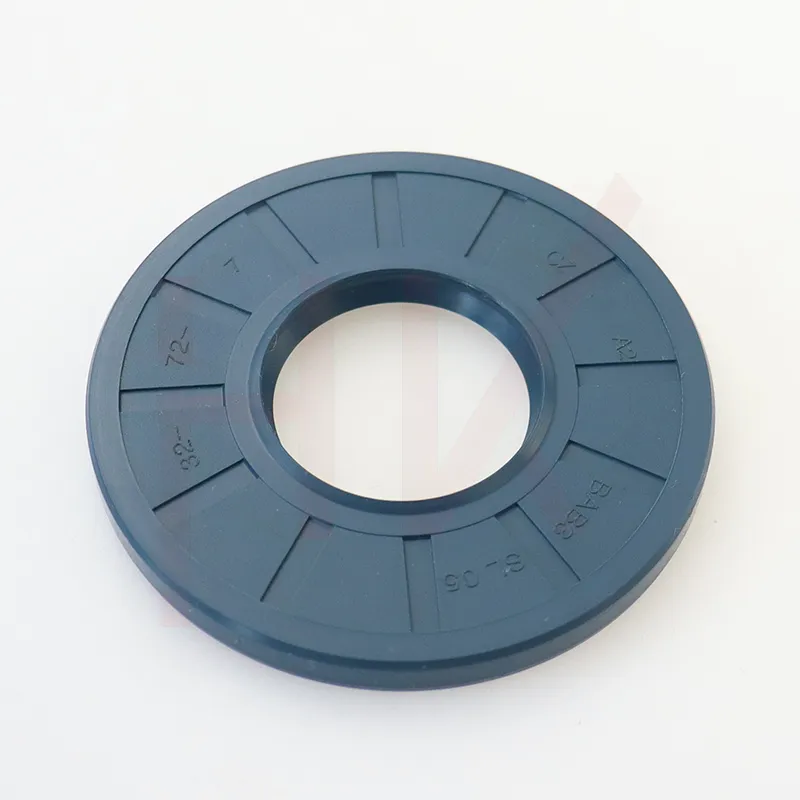Nov . 06, 2024 17:08 Back to list
Hydraulic Seal Maintenance and Repair Techniques for Optimal Performance and Longevity
Hydraulic Seal Repair Essential Insights for Maintenance and Longevity
Hydraulic systems are widely utilized across various industries, from manufacturing machinery to construction equipment. They rely on hydraulic seals to maintain pressure and ensure the efficient operation of hydraulic components. Over time, however, these seals can wear out or become damaged, leading to leaks and reduced performance. Understanding hydraulic seal repair is essential for maintaining operational efficiency and prolonging the life of hydraulic systems.
The Importance of Hydraulic Seals
Hydraulic seals play a crucial role in preventing fluid leakage and maintaining the integrity of a hydraulic system. They create a barrier between different components, allowing for the effective transfer of power through incompressible fluids. A properly functioning hydraulic seal ensures that the system can operate at optimal pressure, contributing to the overall performance and safety of the equipment.
Common Causes of Seal Failure
Several factors can lead to the degradation or failure of hydraulic seals. Among the most common are
1. Wear and Tear Over time, hydraulic seals experience wear due to friction and exposure to harsh operating conditions. As they wear down, they can become less effective at sealing, allowing fluid to leak.
2. Contamination Contaminants such as dirt, debris, or metal particulates can enter the hydraulic system and damage seals. These particles can cause abrasions and other forms of wear, further compromising seal integrity.
3. Temperature Fluctuations Extreme temperature changes can affect the elasticity and durability of hydraulic seals. High temperatures can cause seals to harden and crack, while low temperatures can make them brittle.
4. Incompatible Fluids Using hydraulic fluids that are not compatible with the seal material can lead to chemical degradation. It is vital to select the right type of fluid that is suitable for the seals used in your system.
5. Improper Installation Incorrect installation can lead to seal misalignment or overtightening, which can cause leaks or premature seal failure.
Identifying Hydraulic Seal Problems
Regular inspection and maintenance are crucial for identifying seal-related issues before they escalate
. Some common signs of hydraulic seal failure include- Visible leaks around hydraulic cylinders or connectors. - Decreased system pressure. - Unusual noises during operation. - Increased power consumption. - Changes in the performance of hydraulic machinery.
Addressing these symptoms promptly can save time and money on repairs while ensuring the safety and efficiency of equipment.
hydraulic seal repair

Steps for Hydraulic Seal Repair
When faced with the need for hydraulic seal repair, follow these essential steps
1. Identify the Problem Conduct a thorough inspection to determine the source of the leak and the condition of the seal.
2. Disassemble the Hydraulic Component Carefully disassemble the hydraulic cylinder or component where the seal is located, taking care to note the order and orientation of parts.
3. Remove the Old Seal Use appropriate tools to remove the damaged seal, ensuring that no debris remains in the housing that could affect the new seal.
4. Prepare for Replacement Clean the sealing surfaces and inspect them for damage. If the surfaces are scratched or pitted, they may need to be repaired or replaced.
5. Install the New Seal Select a seal that matches the original specifications. Carefully install the new seal, ensuring it is seated correctly and oriented properly.
6. Reassemble the Component Reassemble the hydraulic component, following the manufacturer’s specifications and torqueing bolts to the recommended settings.
7. Test the System After reassembly, conduct a pressure test to check for leaks and ensure that the system operates correctly.
Preventative Measures
To minimize the chances of future seal failures, consider implementing these preventative measures
- Regularly inspect and maintain hydraulic systems. - Monitor fluid levels and quality. - Use filtration systems to minimize contamination. - Train personnel on proper handling and maintenance techniques.
Conclusion
Hydraulic seal repair is an essential aspect of maintaining hydraulic systems. Understanding the causes of seal failure, performing timely repairs, and implementing preventative measures can significantly enhance the longevity and efficiency of hydraulic equipment. By investing effort and resources into seal maintenance, businesses can avoid costly downtime and ensure the reliable operation of their hydraulic systems.
-
Wiper Oil Seal: Our Commitment to Clean Hydraulics
NewsAug.13,2025
-
Hydraulic Oil Seal for Self Discharging Cars
NewsAug.13,2025
-
Hub Oil Seal for Agricultural Tractor Hubs
NewsAug.13,2025
-
Skeleton Oil Seal with NBR Material
NewsAug.13,2025
-
Rotary Lip Seal for High Pressure Applications
NewsAug.13,2025
-
Cylinder Seal Kits Our Legacy of Hydraulic Trust
NewsAug.13,2025
-
Unlocking the Potential of Hydraulic Systems with Essential Sealing Solutions
NewsAug.06,2025
Products categories
















